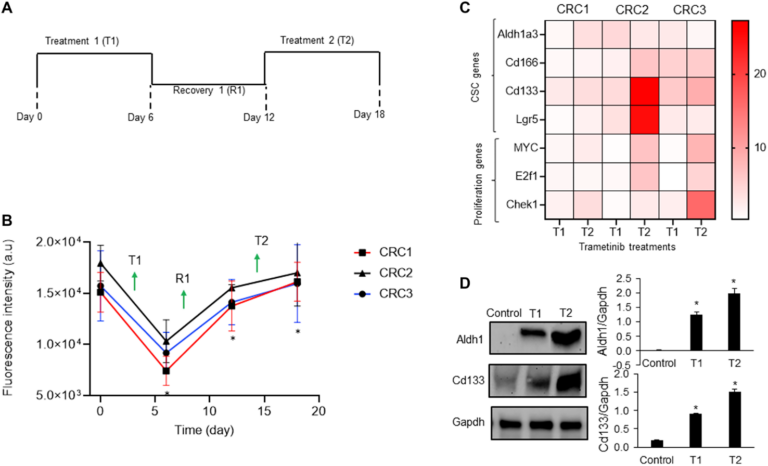Behind the Study: HER3: A Vital Target in Cancer Treatment
Oncotarget, Spotlight
October 12, 2023Dr. Omkar Desai, from the Department of Surgery at Case Western Reserve University and University Hospitals Cleveland Medical Center, describes a research perspective he co-authored with Dr. Rui Wang that was published by Oncotarget in Volume 14, entitled, “HER3- A key survival pathway and an emerging therapeutic target in metastatic colorectal cancer and pancreatic ductal adenocarcinoma.”
Behind the Study is a series of transcribed videos of researchers elaborating on their oncology-focused research published by Oncotarget. Visit the Oncotarget YouTube channel for more insights from outstanding authors.
—
Hi, everyone. My name is Omkar Desai and I’m a medical graduate currently involved in cancer research in the Department of Surgery at Case Western Reserve University and University Hospitals Cleveland Medical Center. Our lab mainly focuses on how the tumor microenvironment mediates cancer cell growth and chemo resistance in colorectal cancer and pancreatic cancer. Today, I’ll be briefly talking about our recent publication in Oncotarget, titled, HER3- A key survival pathway and an emerging therapeutic target in metastatic colorectal cancer and pancreatic ductal adenocarcinoma.
Colorectal cancer, or CRC, and pancreatic ductal adenocarcinoma, or PDAC, are amongst the top-3 leading causes of cancer-related deaths in the United States. Treatments are only marginally effective, and in patients with metastasis, the 5-year survival rates are below 14% in CRC and just 3% in patients with PDAC. The liver serves as a primary site for distant metastasis, with the prevalence of up to 80% in CRC and PDAC.
Once the cancer cells have metastasized, the surrounding tumor microenvironment plays a crucial role in the progression of these cancers and their response to treatment. Through research in our lab, we have successfully identified ErbB3, also known as HER3, as a significant factor contributing to both cancer cell proliferation and chemo resistance in metastatic colorectal cancer and PDAC.
We found that in patients with liver metastasis, hepatocytes trigger the activation of HER3, and HER3 is secreted in a paracrine fashion by the liver endothelial cells. HER3 promotes cancer cell proliferation through activation of survival pathways such as AKT. We also discovered that using HER3 inhibitors effectively suppressed HER3-induced tumor growth in subcutaneous xenograft models. We also found that HER3-targeted therapies may be useful in treating patients with both KRAS wild-type or mutant metastatic colorectal cancer, either as monotherapy or in conjunction with the standard of care therapies. Together, these findings highlight the crucial role of HER3 in promoting colorectal cancer cell survival.
Interestingly, this pro survival role of HER3 is also seen in metastatic PDAC. We recently discovered that liver endothelial cells secrete neuregulins, which activate HER3 in metastatic PDAC cells that express HER3, or in other words, cells which are HER3-positive blocking HER3 with HER3 antibodies such as seribantumab, effectively inhibits the proliferation in HER3-positive PDAC cells. However, in HER3-negative PDAC cells, seribantumab is ineffective. This finding highlights that HER3-targeted therapies can be effective In treating patients with HER3-positive metastatic PDAC, and HER3 expression, or positivity, can be used as a predictive biomarker for patient response to HER3-targeted therapies.
Now, I just want to take a step back and highlight that prior preclinical studies have shown that HER3-targeted therapies with antibodies or inhibitors have been effective in blocking tumor growth in several types of cancers such as breast or head and neck. However, in translating this preclinical finding to clinical studies, they’ve shown limited impact on patient outcomes in various clinical trials. Why is that the case? Why have clinical trials targeting HER3 not being able to show the same results which the preclinical models have?
Through research in our lab, we have successfully identified ErbB3, also known as HER3, as a significant factor contributing to both cancer cell proliferation and chemo resistance in metastatic colorectal cancer and PDAC.
–Dr. Omkar Desai
Well, based on our preclinical study, only HER3-positive cells and tumors are susceptible to HER3-targeted therapies, and while only 30% of primary PDAC and about 60% of metastatic PDAC express HER3, it is possible that the majority of the enrolled patients in those trials had tumors that did not express HER3, or in other words, were HER3-negative. If tumor cells are HER3-negative, they’re unlikely to respond to HER3-targeted therapies. The previous clinical trials did not check for HER3 expression, and if the majority of the patients were HER3-negative, it is unlikely that they would respond to HER3-targeted therapy.
A recent ongoing trial has demonstrated the effectiveness of anti-HER3 antibodies in patients with neuregulin 1 gene fusions, which is a genetic anomaly that triggers HER3 activation. Therefore, we believe that identifying HER3 expression and looking for gene fusions, such as NRG1, serve as a crucial predictive biomarker for patient response to HER3-targeted therapies and future clinical trials can really focus on this.
On a separate note, we believe that there could be alternative HER3-activating mechanisms, which may be the reason for chemo resistance. In our lab, we recently discovered that liver endothelial cells secrete other soluble factors such as LRG1, which can activate HER3 in an unconventional manner. And so in such cases, current HER3-targeted therapies, such as seribantumab, could be ineffective. Additionally, it is well-established that in other cancer types, tumor cells have a tendency to compensate for HER receptor inhibition by over expressing other receptors of the HER family. For example, in lung cancer where an EGFR inhibitor is used or in breast cancer where a HER2 inhibitor is used, the observation is that the patients become resistant to EGFR or HER2-targeted therapy and start over expressing HER3. Therefore, HER3 over-activation is a resistance mechanism, and similarly, it is possible that cancer cells develop these acquired resistant mechanisms and start over expressing EGFR or HER2 when they’re targeted with HER3 therapy. That’s another interesting area in which future studies can be directed.
We believe cancer treatment has witnessed a paradigm shift in the recent years. In outlining our future directions, we will be conducting a comprehensive exploration of alternative activation mechanisms, which can facilitate the development of novel therapies. Also, our effort will be directed towards elucidating potential resistant mechanisms to form combination therapies in addition to existing therapies. Our hope is that this publication not only functions as a roadmap for future research in the realm of HER3 activation in metastatic cancer, but also acts as a catalyst for increased focus efforts and integration of these discoveries into clinical trials.I’d like to thank all my colleagues for their contributions in the lab, my mentor, Dr. Rui Wang, without whom this research wouldn’t have been possible, and the NIH for funding our past and ongoing projects. I’d also like to thank the Oncotarget journal for their seamless publication process. The editorial team showed remarkable efficiency in promptly reviewing our manuscript and offered a very high-quality peer review. Finally, I’d like to thank you all for watching this video and reading our recent publication. We hope that it not only provides you with valuable insight, but also encourages you to do your own research within this domain. Thank you.
Click here to read the full editorial published by Oncotarget.
—
Oncotarget is a unique platform designed to house scientific studies in a journal format that is available for anyone to read—without a paywall making access more difficult. This means information that has the potential to benefit our societies from the inside out can be shared with friends, neighbors, colleagues and other researchers, far and wide.
For media inquiries, please contact media@impactjournals.com.

